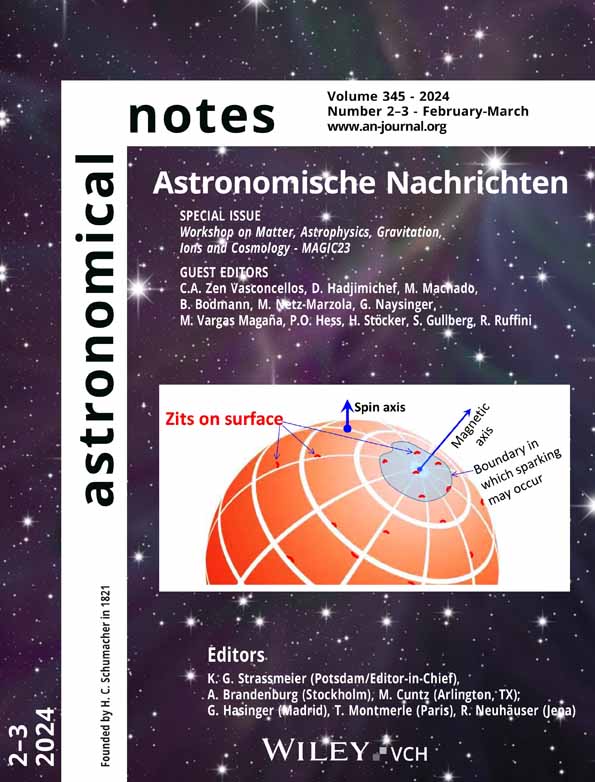Circumstellar disk and the first generation of stars
Abstract
Circumstellar disk (CD) around the first generation of stars have been numerically investigated here to see if the cooling regimes also play a role in the formation and evolution of the disk associated with the most massive protostars (MMPS). Also, an emphasis is given to exploring the effect of the initial turbulent motion of the metal-free gas on the resulting morphology of the CD. For this, a systematic range of Mach number has been examined. It has been found that the disk-to-star mass ratio / is larger when the model evolution is based on the first H line cooling followed by subsequent cooling via collision-induced emission than in the model where only H line cooling remains operative. Also, irrespective of the initial turbulence in the cloud, the former type of model yields a CD as massive as 7.66 M while the latter type produces a disk as massive as 1.29 M. Moreover, the inner part of the CD is found dominated by higher subsonic turbulent motions in the case of the former type of models than in the latter type. CDs around MMPS in both types of models show stable disk structures.




